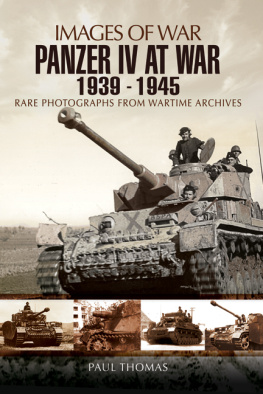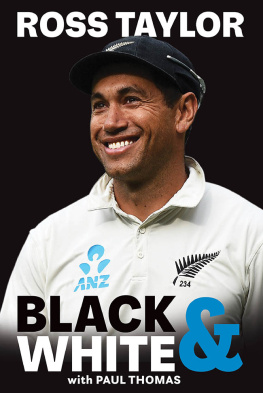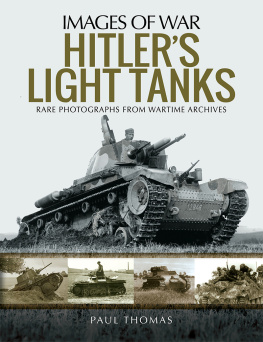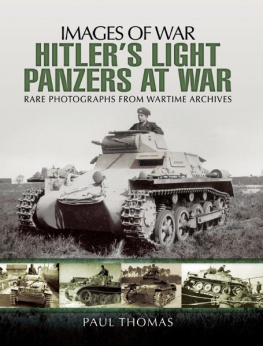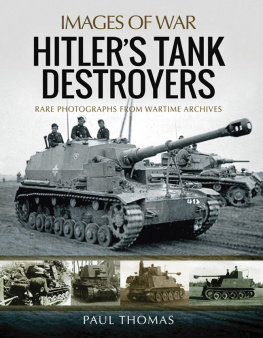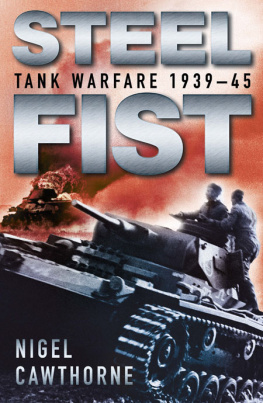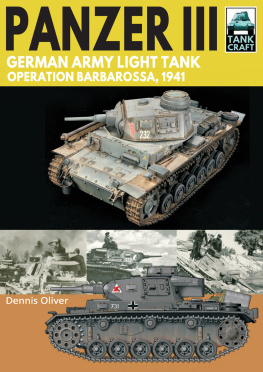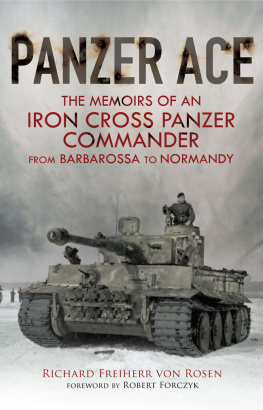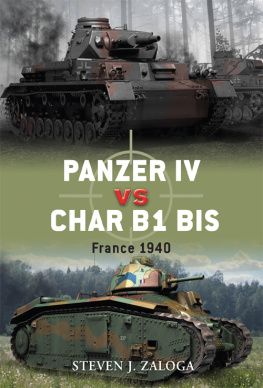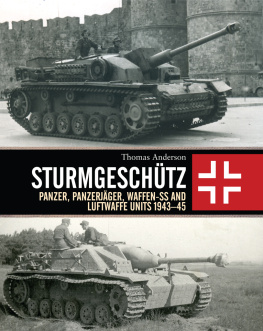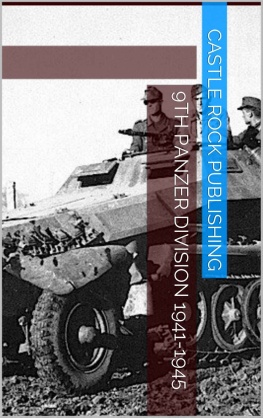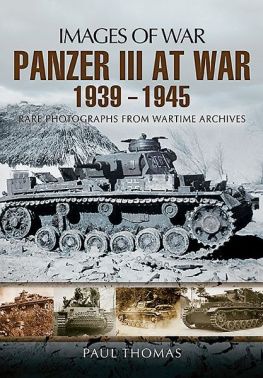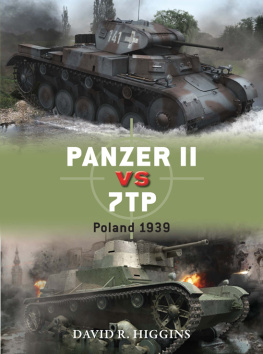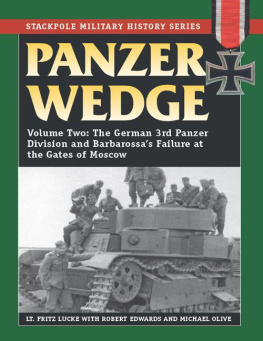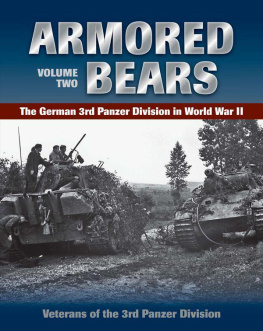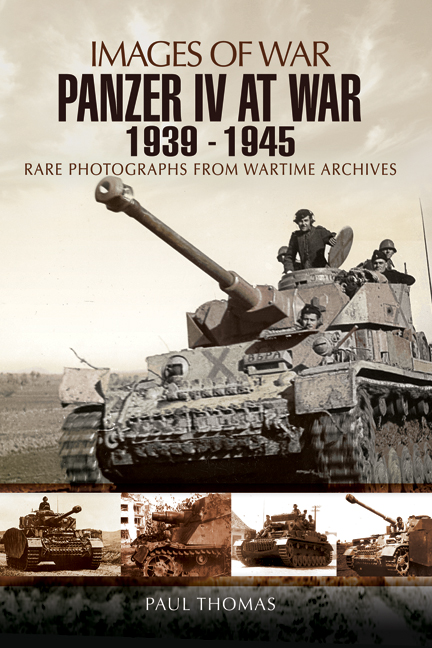
First published in Great Britain in 2012 by
PEN & SWORD MILITARY
An imprint of
Pen & Sword Books Ltd
47 Church Street
Barnsley
South Yorkshire
S70 2AS
Copyright Paul Thomas, 2012
ISBN 978-1-84884-681-4
eISBN 978-1-78303-903-6
The right of Paul Thomas to be identified as author of this work has been asserted by him in accordance with the Copyright, Designs and Patents Act 1988.
A CIP catalogue record for this book is available from the British Library.
All rights reserved. No part of this book may be reproduced or transmitted in any form or by any means, electronic or mechanical including photocopying, recording or by any information storage and retrieval system, without permission from the Publisher in writing.
Typeset by Concept, Huddersfield, West Yorkshire
Printed and bound in England by CPI Group (UK) Ltd, Croydon, CR0 4YY
Pen & Sword Books Ltd incorporates the imprints of Pen & Sword Aviation,
Pen & Sword Family History, Pen & Sword Maritime, Pen & Sword Military,
Pen & Sword Discovery, Wharncliffe Local History, Wharncliffe True Crime,
Wharncliffe Transport, Pen & Sword Select, Pen & Sword Military Classics,
Leo Cooper, The Praetorian Press, Remember When, Seaforth Publishing and Frontline Publishing.
For a complete list of Pen & Sword titles please contact
PEN & SWORD BOOKS LIMITED
47 Church Street, Barnsley, South Yorkshire, S70 2AS, England
E-mail: enquiries@pen-and-sword.co.uk
Website: www.pen-and-sword.co.uk
Introduction
T he highly-illustrated Panzer IV at War is a record of one the foremost German fighting machines of the Second World War. With comprehensive captions and text the book tells the Panzer IVs story from its production to the key battles in Poland, France, North Africa, Italy, Russia and North West Europe. Initially the Panzer IV was designed as an infantry support tank, but soon proved to be so diverse and effective that it earned a unique tactical role on the battlefield.
Throughout the book it shows how the Panzer IV evolved and describes how the Germans carefully utilized all available reserves and resources into building numerous variants that went into production and saw action on the battlefield. It depicts how these formidable tanks were adapted and up-gunned to face the ever increasing enemy threat.
Between 1936 and 1945, over 8,000 Panzer IVs were built. For most of the war this tank was certainly a match for its opponents tanks and quickly and effectively demonstrated its capability on the battlefield. In fact it played a crucial part in the desperate attempt to halt the Soviet drive, and was also used with deadly effect in the West performing defensive operations.
The Panzer IV was a great credit to the Panzer divisions it served, and was the only Panzer to stay in production throughout the war. It was also a credit to its design that there were many Panzer IV chasses converted into various self-propelled antitank weapons than any other Panzers that entered service.
Chapter One
Blitzkrieg 19391941
F or the invasion of Poland the the Panzerkampfwagen IV (literally armoured combat vehicle, the German for what in English is referred to as a tank), commonly known as Pz.Kpfw.IV made its debut for the first time on the battlefield. Designed as an infantry-support tank, the Panzer IV was not originally intended to engage enemy armour, but to thrust forward smashing through enemy defences and protecting the infantry which were closely supporting its drive. During the invasion of Poland the Panzerwaffe (literally, armoured force) mainly used the Ausf.B and Ausf.C variant models. Powered by the newly improved HL 120TRM Maybach engine the Pz.Kpfw.IV Ausfrung, or Variant was the most powerful tank on the Polish battlefield. The tanks main armament mounted the Kampfwagenkanone 37 L/24 (KwK 37 L/24) 75mm (2.95in) gun, which was a low-velocity gun designed to mainly to fire high-explosive shells. Against armoured targets, firing the Panzergranate 39 APCBC (armour piercing capped ballistic capped) ammunition at 385 metres per second, the gun could penetrate 3941mm of armour angled at 60 degrees to the horizontal at 500 yards; with the later Granat 38 HEAT (high explosive anti tank, or hollow-charge) ammunition types, penetration was 70, 75 or 100mm at any rage, depending on which projectile variant was used. For local defence the vehicle was armed with a 7.92mm (0.31in) MG 34 machine gun which was mounted coaxially with the main gun in the turret, while a second machine gun of the same type was mounted in the front plate of the hull (not on Ausf.B or Ausf.C).
In July 1939 the Panzerwaffe issued a new organization chart, in which each Panzer Regiment was to have two medium companies, each of which was to have two Panzer IVs in the HQ company, five Panzer IIs in one company and twelve Panzer IVs in three platoons of four, a total of fourteen Panzer IVs per company. A month later the Pz.Kpfw.IV was ready for action. During the last weeks of August almost the entire number of Pz.Kpfw.IV, 211 of them, were moved along the frontier of Poland, and were divided among the five army groups that were ordered to invade the country. Panzer Regiments 1 and 2 both had twenty-eight Panzer IVs, giving the 1st Panzer Division fifty-six tanks, while in the 1st Light Division Panzer Regiment 11 also had twenty-eight Panzer IVs, while Pz.Abt.65 had fourteen, for a total of forty-two tanks.
During the early hours of 1 September 1939, the German army finally crossed the Polish frontier and began Operation White, the code-name for the German invasion of Poland. For the attack the German army was broken-up into two Army Groups Army Group North, consisting of the Fourth and Third armies, under the command of General Fedor von Bock, and the Army Group South, consisting of the Eighth, Tenth and Fourteenth armies, commanded by General Gerd von Rundstedt. From north to south all five German Army Groups crashed over the frontier. Almost immediately they began achieving their objectives.
The entire thrust of the German Army was swift the devastatingly efficient Blitzkrieg had arrived. From the beginning of the invasion the Luftwaffe had paralysed large sections of the Polish railway network, severely disrupting the desperately needed mobilization, which was still far from complete. The Poles were faced with the finest fighting army that the world had ever seen. The quality of the German weapons above all the Panzers was of immense importance during the Polish campaign.
Within a week of the invasion advanced elements of Reinhardts 4th Panzer Division, including a number of Pz.Kpfw.IVs, arrived outside Warsaw, and fought a series of the first urbanized battles of the Second World War. Although Reinhardt was to lose 57 out of 120 Panzers engaged in the fighting inside the capital, his division went on to fight outside the city near the Bzura, employing a number of Pz.Kpfw.IVs against strong enemy resistance.
Despite the losses in and outside Warsaw the Pz.Kpfw.IV was very successful in almost all of its engagements against the enemy. Poland was its baptism of fire and although seventy-one tanks were lost in combat it had done sterling service for the Panzertruppe .
As the German invasion of Poland came to a victorious end, it was decided to scale up production of the Panzer IV, which was adopted for general use on 27 September 1939 as the Sonderkraftfahrzeug (special motor vehicle) 161 (Sd.Kfz.161).
Eight months later the tank was yet again in action, this time against the west. For the attack, the German Army were divided into three army groups Army Group A, B and C. The main role would be given to Army Group A, which would drive its armoured units through the Ardennes, swing round across the plains of northern France and then make straight for the Channel coast, thereby cutting the Allied force in half and breaking the main enemy concentration in Belgium between Army Group A advancing from the south and Army Group B in the north. The task of Army Group B was to occupy Holland with motorized forces and to prevent the linking up of the Dutch army with the Anglo-Belgian forces. It was to destroy the Belgian frontier defences in a rapid and powerful attack and force the enemy back over the line between Antwerp and Namur. The fortress of Antwerp was to be surrounded from the north and east and the fortress of Liege from the north-east and north of the Meuse.

